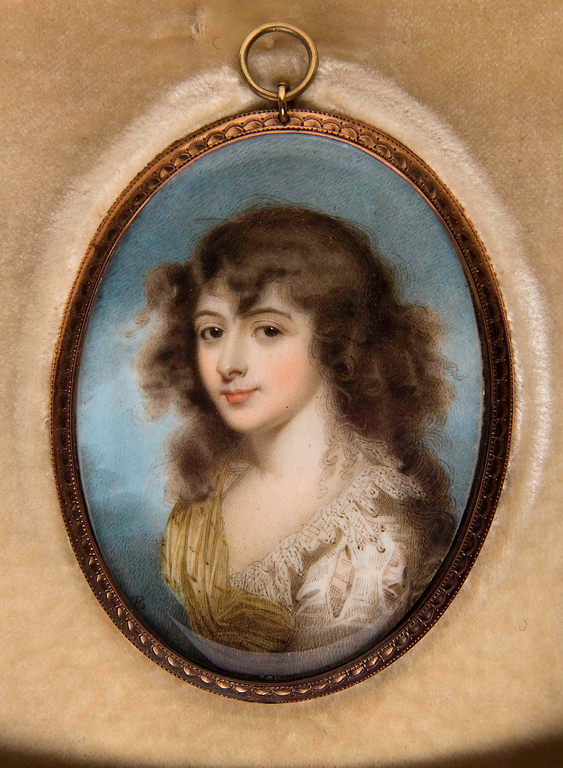Intimate Images of Love and Loss:
Portrait Miniatures
Koss Gallery
The portrait miniatures featured in Intimate Images of Love and Loss are from continental Europe, Britain, and America, and were drawn from the Museum’s Collection and a number of Milwaukee-area collections. The small-scale portraits, most measuring less than three inches tall, are painted on ivory and set within beautifully made cases of glass and metal. The more than sixty objects in the exhibition, now on display as works of art, were once highly personal possessions that were held and worn. Miniatures developed from illustrations in medieval illuminated manuscripts. The word “miniature” derives from the Latin word miniare, meaning “to paint with red lead”, which was one of the techniques used to color manuscripts. Eventually, these illustrations within the text were viewed as small paintings, and were produced independent of the manuscripts. The word “miniature” to mean something small came later.
The portrait miniature emerged in the sixteenth century when nobles used them as gifts to make political alliances. With the rise of the middle class and the tendency towards sentimentality in the late eighteenth century, the demand for portrait miniatures skyrocketed. Their small scale reflects their domestic and private role. Commonly worn as jewelry, they were also displayed on the wall of the home as a type of “family album.” Often miniatures were framed with arrangements of hair from the one portrayed to strengthen the personal connection or as a remembrance of a deceased loved one.
- John Barry (British, active 1784–1827), A Young Girl, ca. 1790. Gift of Richard and Erna Flagg.

